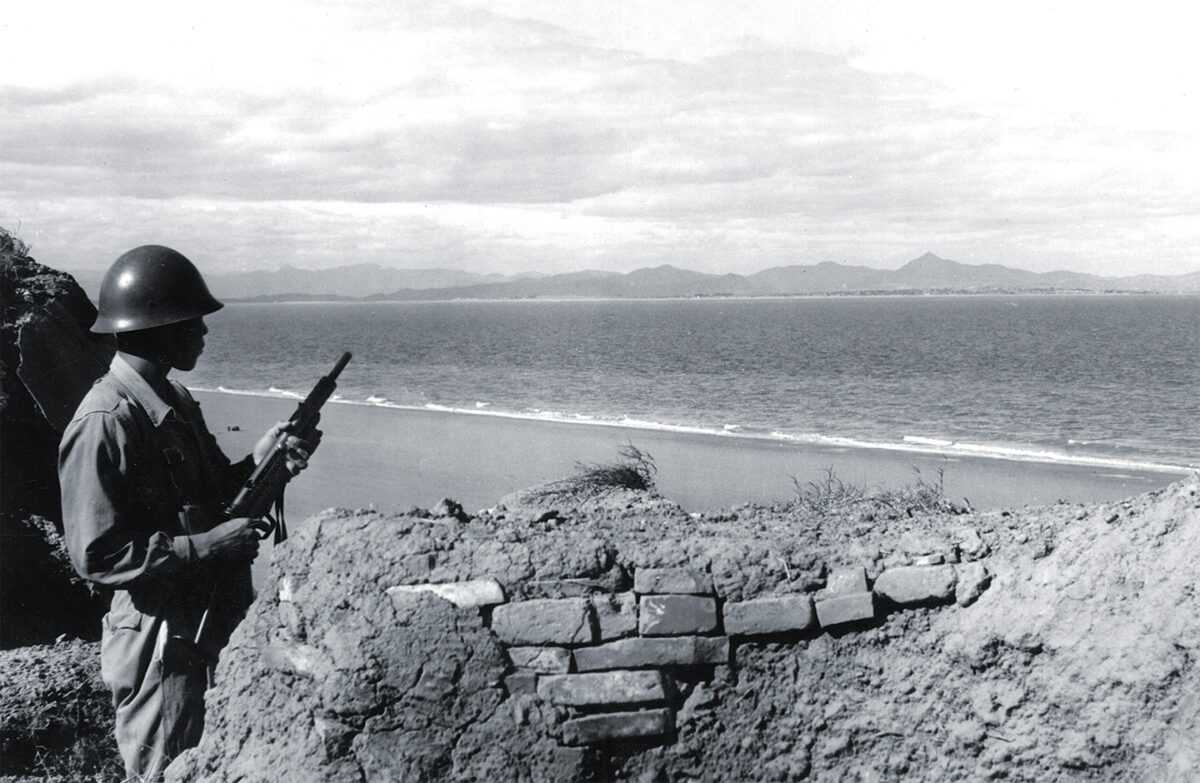On Oct. 1, 1949, Chinese Communist Party Chairman Mao Zedong declared the People’s Republic of China (PRC) the sole government of China. That December 7 Generalissimo Chiang Kai-shek and the leadership of the Republic of China (ROC) fled to the island of Taiwan. They, too, soon claimed to be the sole legitimate government of China. Thus, the stage was set for a series of military confrontations in the Taiwan Strait.
The first crisis occurred in 1954–55 and centered on the PRC seizure of small island groups offshore from Zhejiang (Chiang’s home province) that were under ROC military control. It began when the PRC shelled the ROC-controlled island of Kinmen (aka Quemoy). In January 1955 PRC forces seized the Yijiangshan Islands. That action prompted the U.S. Congress to enact the Formosa Resolution, authorizing the use of American military force to defend Taiwan against further PRC military thrusts. In its wake the U.S. Navy facilitated the ROC evacuation of the Dachen Islands, while the Pentagon contemplated the use of nuclear-tipped missiles on behalf of the ROC.
The second crisis, in 1958, also involved islands just offshore from Zhejiang. This time the PRC established an artillery blockade of Kinmen, which forced seaborne and aerial drops of food and supplies to its defenders. The United States deployed significant air and naval forces into the Taiwan Strait and again considered the use of nuclear weapons.
The third crisis arose in 1995–96 when the PRC mobilized its armed forces in Fujian and conducted missile tests and live-fire naval exercises in the Taiwan Strait, disrupting commercial shipping near the Taiwanese ports of Keelung and Kaoshiung. Unlike the first crises, the PRC’s actions were in protest to then ROC President Lee Teng-hui’s moves toward a democratic and politically independent Taiwan—an idea wholly abhorrent in the minds of Beijing’s leaders. American warships, including two carrier battle groups, transited the Taiwan Strait, but the crisis eventually abated.
Just why the PRC risked a nuclear response from the United States in the 1950s over a handful of small island groups in the Taiwan Strait is instructive.
Essentially, Beijing exploited the first two military crises with Taiwan to convince the Soviet Union of the PRC’s immediate need for Russian nuclear weapons technology and advisers. This was followed up by a decision at the highest political ranks in Beijing to devote considerable financial resources and manpower into making the PRC a nuclear power as rapidly as possible. On Oct. 16, 1964, the PRC successfully detonated its first nuclear device, of approximately the same yield as the one the United States used against Nagasaki in 1945 and the one detonated by Russia in 1949 during its first nuclear weapon test. Thus, the PRC manipulated both the United States and the Soviet Union to achieve nuclear parity by engaging in relatively minor military actions in the Taiwan Straits.
Lessons:
Look through the bluff. Throughout the Cold War, even during the hot wars on the Korean Peninsula and in Vietnam, the PRC never attempted a full-scale invasion of Taiwan. The mere threat, however, contributed to another achievement—nuclear parity with the superpowers.
Tigers don’t change their stripes. Less than a decade after the PRC’s founding its leaders were politically savvy enough to use the Taiwan Strait Crises to wring all necessary technology from the Soviet Union to build their own nuclear bombs. Beijing still uses this manipulative approach to advance its international ambitions.
Remain vigilant. In the 74 years since its inception the PRC has not budged from its intentions with regard to Taiwan—unification. How it aims to accomplish that is an open question.
This story appeared in the Summer 2023 issue of Military History magazine.
historynet magazines
Our 9 best-selling history titles feature in-depth storytelling and iconic imagery to engage and inform on the people, the wars, and the events that shaped America and the world.






